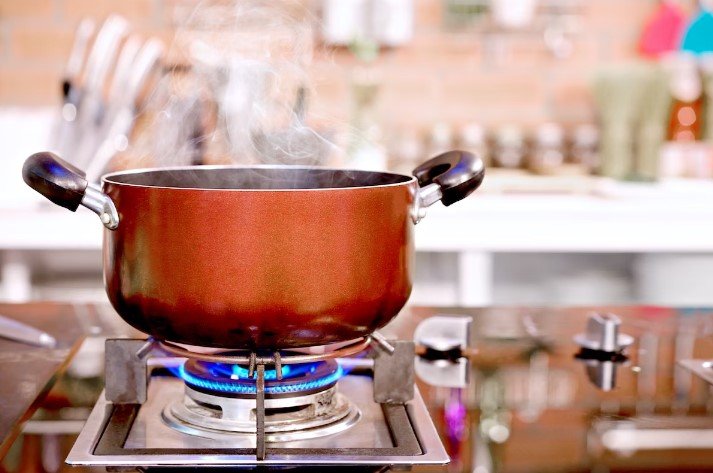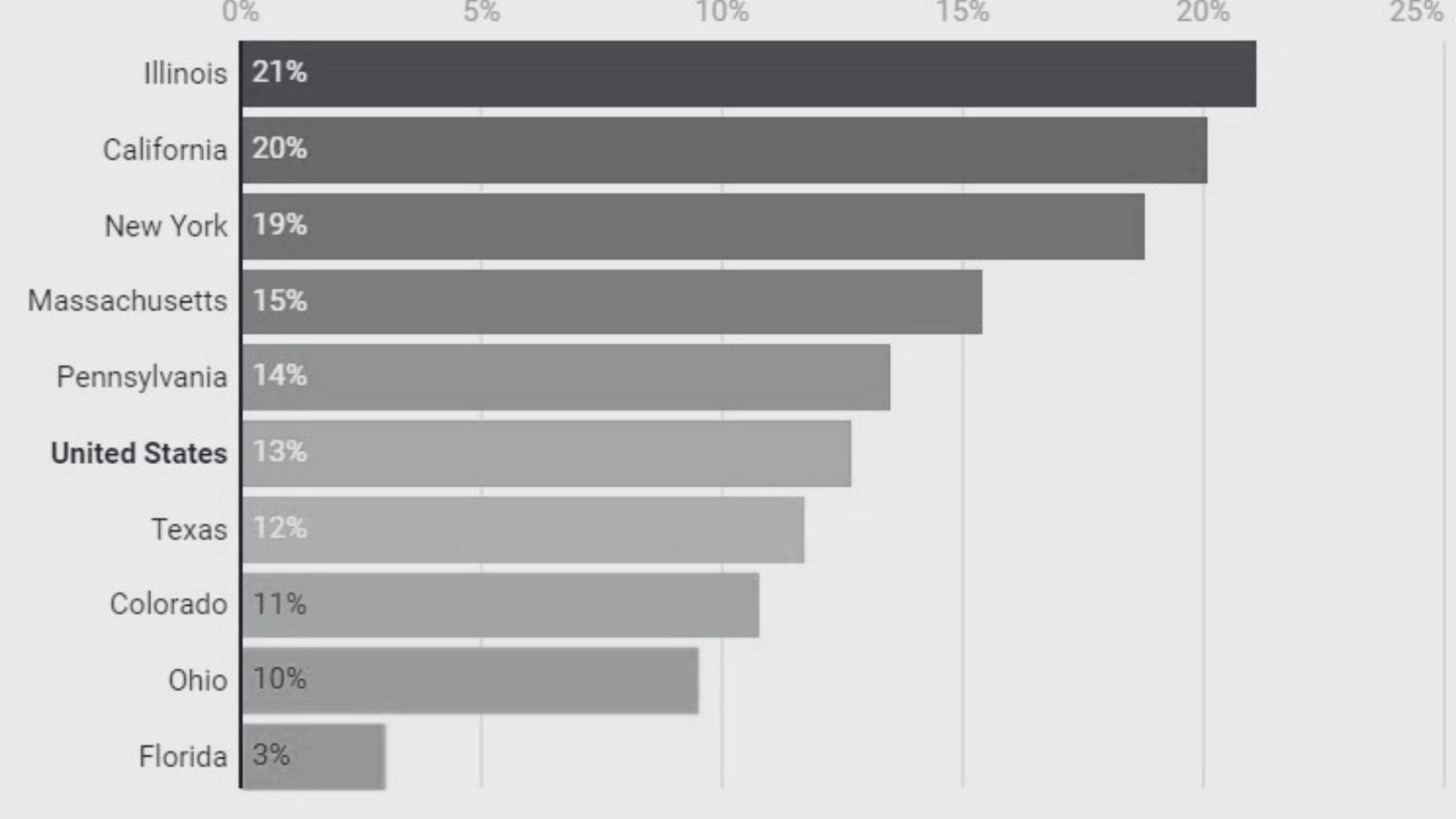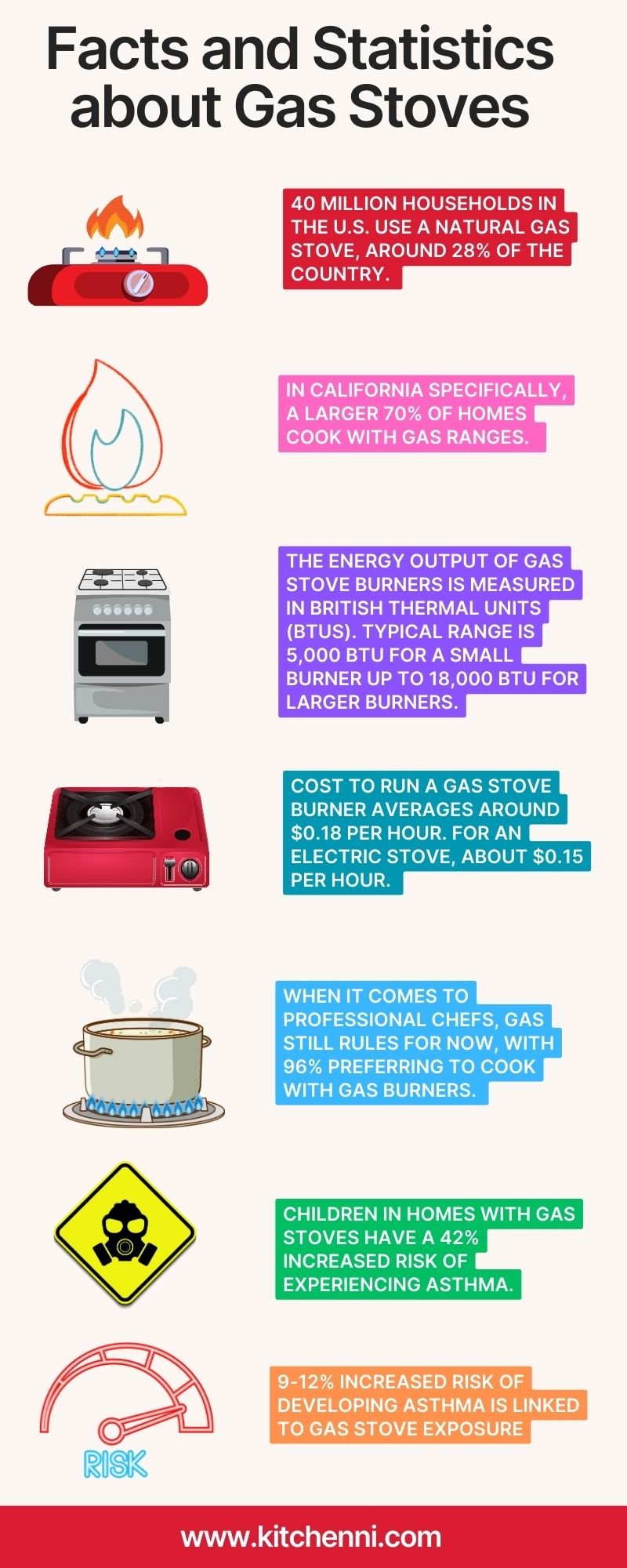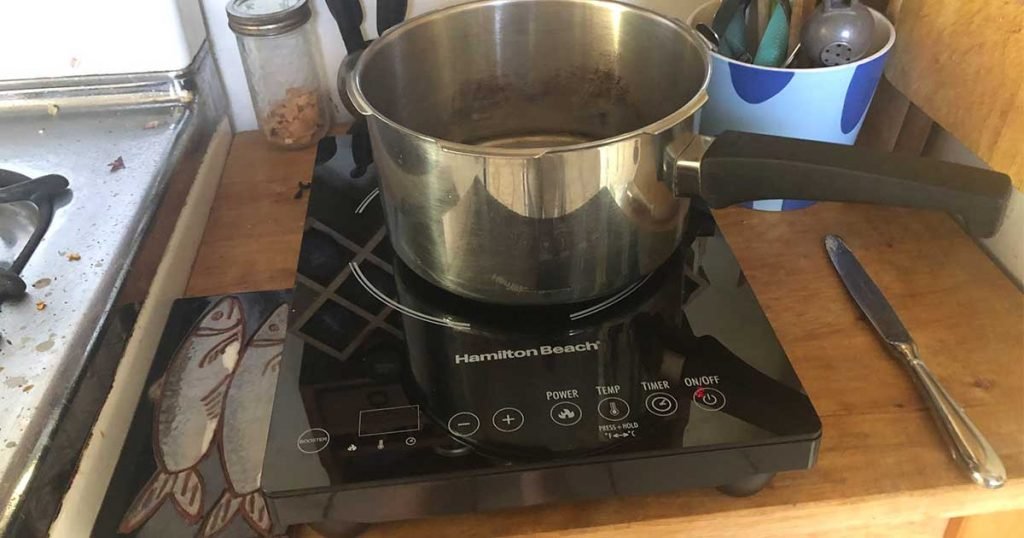Just like any stovetops out there, gas stoves have their good and bad sides. They have been in home kitchens for decades, beloved for their instant heat control and cooking flexibility. But more recently, it seems like the dangers of these stovetops are leading to second thoughts, especially by experts.
And that’s not all.
Several cities in California have passed laws prohibiting natural gas in new construction. So how hazardous are these appliances, and will more places move to phase them out?
Let’s take a look at the risks, regulations, and alternatives.
Are Gas Stoves Bad for Your Health?
Burning gas emits a mixture of air pollutants, including nitrogen dioxide, carbon monoxide, formaldehyde, and fine particles. Of most concern is nitrogen dioxide, a respiratory irritant linked to asthma, and benzene, a known carcinogen also found in cigarette smoke.
Long-term exposure to these pollutants, especially in enclosed spaces like kitchens, may increase risks of developing asthma, allergies, and cardiovascular and respiratory diseases. Children are most vulnerable.
Studies have confirmed higher nitrogen dioxide concentrations in homes with gas stoves compared to electric. Simply operating a gas stove for a few minutes spikes levels far beyond health guidelines. Proper ventilation helps but does not eliminate exposure risks.
Why are Gas Stoves Bad?
You may be wondering, how bad are gas stoves? Are they still worth it?
There are a few key reasons why gas stoves may have a negative effect on your indoor air quality, and why your loved stove is considered bad:
- Combustion byproducts – Burning natural gas or propane creates nitrogen oxides, carbon monoxide, formaldehyde, benzene, and particulate matter as byproducts. These can irritate the lungs and build up, especially if you don’t have good ventilation.
- Methane leaks – Methane is the main component of natural gas. Small leaks from connections behind or under gas stoves can release methane, a greenhouse gas.
- Inconsistent flames – Gas stove flames fluctuate, sometimes creating inefficient combustion and higher emissions of carbon monoxide and nitrogen dioxide.
Are Gas Stoves Being Banned?
While no national bans exist in the U.S., several California cities have passed laws prohibiting natural gas in new residential construction projects. This move will likely phase out gas stove installations in new homes, businesses, and apartments.
The regulations are part of larger municipal efforts to transition toward electric power and combat climate change by reducing fossil fuel reliance. Critics argue the bans impose unnecessary costs on builders and limit consumer choice.
What States Have Banned Gas Stoves?
As of early 2023, there’s no U.S. state-level ban on new gas stove installations. However, the following cities and counties in California have passed building electrification codes prohibiting natural gas infrastructure in new construction:
- San Francisco
- San Jose
- Oakland
- Berkeley
- Brisbane
- Windsor
- Los Angeles County
- Sacramento
Several other California municipalities are considering similar codes. There’s also a good chance that these efforts may expand to other states like New York and Massachusetts, which have set goals to phase out fossil fuel use in buildings.
Do Gas Stoves Cause Cancer?
Research has yet to definitively link gas stove emissions directly to cancer risk. However, gas stoves do release benzene, a carcinogen clearly associated with increased cancer risk.
A new study published in Environmental Science & Technology reveals concerning levels of benzene emitted from gas stoves in homes.
The research, led by Rob Jackson, professor of Earth system science at the Stanford Doerr School of Sustainability, found that having a single gas cooktop burner on high or a gas oven set to 350°F can spike indoor benzene concentrations beyond those found in secondhand smoke.
“Benzene forms in flames and other high-temperature environments, such as the flares found in oil fields and refineries. We now know that benzene also forms in the flames of gas stoves in our homes,” said Jackson.
“Good ventilation helps reduce pollutant concentrations, but we found that exhaust fans were often ineffective at eliminating benzene exposure.”
Benzene is a volatile organic compound (VOC) and a known human carcinogen that can lead to leukemia and other cancers. It is commonly associated with cigarette smoke and car exhaust fumes from gas stations. However, this new analysis identifies gas cooking appliances as an under-recognized source of indoor benzene contamination that persists for hours after stove use.
What are Some Gas Stove Alternatives?
Are you concerned about the dangers associated with gas stoves? Well, you do have some choices. Here are some options at your disposal:
- Electric coil stovetops – Basic electric coils offer a lower upfront cost and can offer you the same benefits as a gas stove. But they are less energy efficient and temperature response is slower.
- Induction stove – Induction directly heats pans using magnetic energy for the fastest heating and easiest cleanup. Induction cooktops are a bit pricey but energy efficient. And remember, you need compatible cookware for these stovetops.
The Bottom Line
While more research is needed, the evidence clearly links gas stove pollution to increased risks of respiratory issues. Replacing gas with electric or induction eliminates these risks while offering you similar functionality.
If you’re unwilling to give up gas cooking, use ventilation, keep flames low, have gas leak detectors and consider annual gas line inspections. As health concerns mount, switching to zero-emission electric stoves may soon become the wise choice.
Common Questions
Are gas stoves getting banned everywhere?
No national U.S. bans are in place, but some California cities have prohibited gas infrastructure in new construction. Additional local bans may emerge but are not yet widespread.
Do gas stoves emit carbon monoxide?
Yes, incomplete combustion in gas stove flames releases carbon monoxide along with other pollutants. Ensure your kitchen is equipped with functioning carbon monoxide detectors.
Do gas stoves deplete oxygen?
No. While combustion does use oxygen, gas stoves will not significantly deplete oxygen or release dangerous levels of carbon dioxide in home kitchens. Proper ventilation helps remove combustion byproducts.
Is a gas stove cheaper than an electric one?
Generally, gas stoves have a lower upfront cost compared to electric or induction. But gas also typically costs more per month in energy bills. Lifetime costs of all types are comparable.
Are gas stoves better for cooking?
This is a matter of personal preference. Gas offers instant temperature control familiar to most cooks. But induction matches this responsiveness while adding safety benefits. Both allow excellent cooking results.
Can you die from gas stove leaks?
Extremely large uncontrolled gas leaks can displace breathable oxygen and cause asphyxiation. But leaks from stoves are very unlikely to reach dangerous levels in home kitchens. Leaks should be promptly fixed to prevent possible explosion risks.





